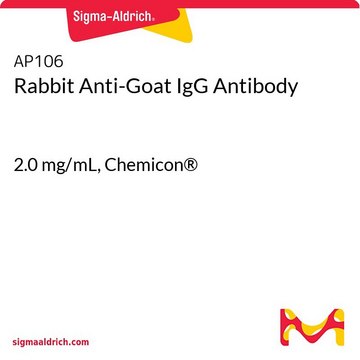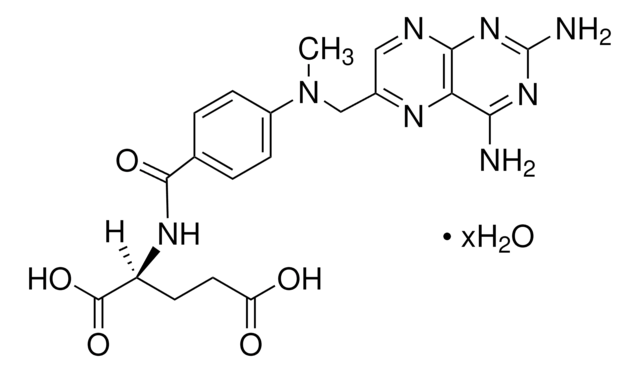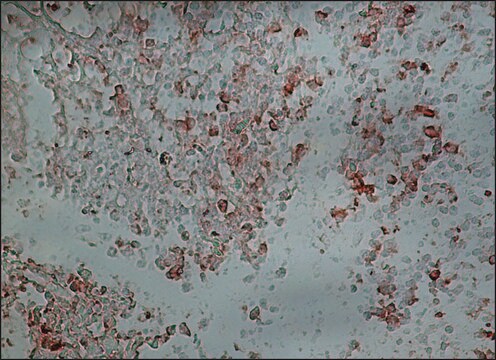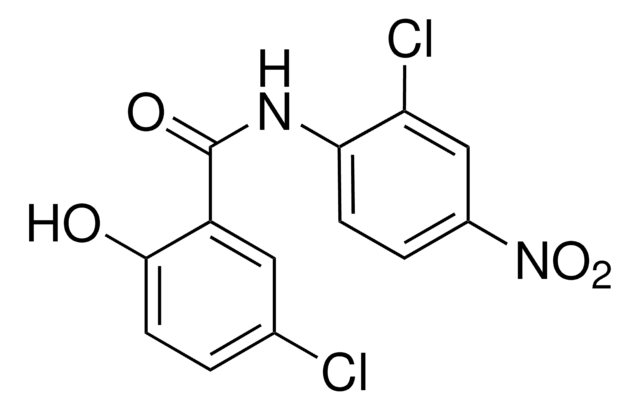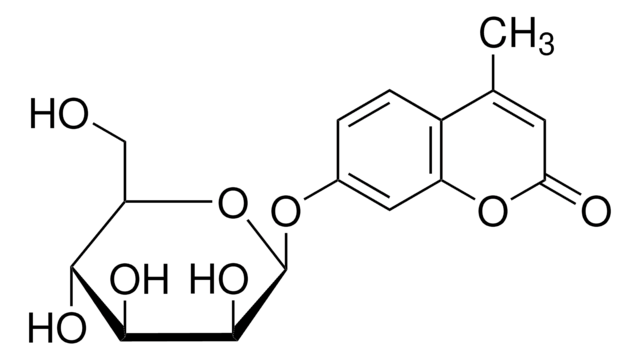H2414
Anti-Humanin (HN) antibody produced in rabbit
affinity isolated antibody, buffered aqueous solution
Synonym(s):
Humanin Detection Antibody, Rabbit Anti-Humanin
Sign Into View Organizational & Contract Pricing
All Photos(1)
About This Item
conjugate:
unconjugated
application:
WB
clone:
polyclonal
species reactivity:
human
citations:
10
technique(s):
western blot: 1:500
Recommended Products
biological source
rabbit
Quality Level
conjugate
unconjugated
antibody form
affinity isolated antibody
antibody product type
primary antibodies
clone
polyclonal
form
buffered aqueous solution
species reactivity
human
technique(s)
western blot: 1:500
shipped in
dry ice
storage temp.
−20°C
target post-translational modification
unmodified
Gene Information
human ... MT-RNR2(4550)
General description
Humanin (HN) is a small polypeptide, derived from mitochondria. This protein is secreted by various cells and is localized in the plasma and bound to the cell membranes.
Immunogen
peptide corresponding to the humanin protein (amino acids 9-24).
Application
Anti-Humanin (HN) antibody produced in rabbit has been used in:
- immunohistochemistry
- immunoprecipitation (1:300)
- fluorescent immunohistochemistry (1:300)
- immunoblotting (1:500)
Biochem/physiol Actions
Humanin (HN) acts as a neuroprotective factor. It is involved in promoting cell survival. Humanin suppresses cell death in the neuronal cells caused by Alzheimer′s disease-related insults like anti-amyloid- precursor protein antibody, neurotoxic amyloid β (Aβ) peptides, and familial Alzheimer disease proteins.
Physical form
Solution of 1 mg/mL in phosphate buffered saline containing 0.02% sodium azide.
Disclaimer
Unless otherwise stated in our catalog or other company documentation accompanying the product(s), our products are intended for research use only and are not to be used for any other purpose, which includes but is not limited to, unauthorized commercial uses, in vitro diagnostic uses, ex vivo or in vivo therapeutic uses or any type of consumption or application to humans or animals.
Not finding the right product?
Try our Product Selector Tool.
Storage Class Code
10 - Combustible liquids
WGK
nwg
Flash Point(F)
Not applicable
Flash Point(C)
Not applicable
Choose from one of the most recent versions:
Already Own This Product?
Find documentation for the products that you have recently purchased in the Document Library.
Mariela A Moreno Ayala et al.
Scientific reports, 10(1), 8542-8542 (2020-05-24)
Humanin (HN) is a mitochondrial-derived peptide with cytoprotective effect in many tissues. Administration of HN analogs has been proposed as therapeutic approach for degenerative diseases. Although HN has been shown to protect normal tissues from chemotherapy, its role in tumor
Radhika H Muzumdar et al.
PloS one, 4(7), e6334-e6334 (2009-07-23)
Decline in insulin action is a metabolic feature of aging and is involved in the development of age-related diseases including Type 2 Diabetes Mellitus (T2DM) and Alzheimer's disease (AD). A novel mitochondria-associated peptide, Humanin (HN), has a neuroprotective role against
Jon-Philippe K Hyatt
Physiological reports, 10(13), e15377-e15377 (2022-07-10)
Skeletal muscle adapts to aerobic exercise training, in part, through fast-to-slow phenotypic shifts and an expansion of mitochondrial networks. Recent research suggests that the local and systemic benefits of exercise training also may be modulated by the mitochondrial-derived peptide, MOTS-c.
Changhan Lee et al.
Trends in endocrinology and metabolism: TEM, 24(5), 222-228 (2013-02-14)
Mitochondria have been largely considered as 'end-function' organelles, servicing the cell by producing energy and regulating cell death in response to complex signals. Being cellular entities with vital roles, mitochondria communicate back to the cell and actively engage in determining
Carla Janzen et al.
PloS one, 13(3), e0193583-e0193583 (2018-03-29)
Intrauterine growth restriction (IUGR) results from a lack of nutrients transferred to the developing fetus, particularly oxygen and glucose. Increased expression of the cytoprotective mitochondrial peptide, humanin (HN), and the glucose transporter 8, GLUT8, has been reported under conditions of
Our team of scientists has experience in all areas of research including Life Science, Material Science, Chemical Synthesis, Chromatography, Analytical and many others.
Contact Technical Service
